How difficult is it to build a set of wheels? I have and old set to look at and copy so i'm sure i will be able to get all the spokes installed correctly. My concern is tensioning them and truing the wheels. Maybe i could get them together and snugged up and then have someone else true them up for me?
Brian Anderson
Ashland, MA
wheel building
It's not too difficult if you take your time. Once laced up, I like to adjust up and down first, and then move to side to side truing. Take a measurement from each side of the hub to the rim, so you get the rim centered in the hub. If you don't feel confident doing this, go ahead and lace it up yourself, and find someone to do the tension / true on the wheel.
Davo
Davo
davomoto
64 CB77
63-7 CB77 Cafe'
67 CL77
64 CL72
66 CL77 big bore flat tracker
Many others!
64 CB77
63-7 CB77 Cafe'
67 CL77
64 CL72
66 CL77 big bore flat tracker
Many others!
Brian,
The hardest part of lacing up and truing a wheel is having the confidence to do it the first time.
There are a number of good tutorials on the internet, so I would start there. Most Harley factory manuals also have a good section of lacing wire wheels.
A few tips to keep in minds. Note the orientation of the spokes on the wheels. By that I mean, if you look at the brake side, the outside spokes should all swing either CW or CCW and the inside will be in the opposite dirction. When you relace the wheel, you should see some wear marks on the outside of the spoke flanges from where the outside spokes rubbed. Make sure you lace the rim so the spokes are back where they were so those wear marks won't show. If you reorient the spokes one hole, all the marks will be visible because the spokes won't cover them. You'll see what I mean when you unlace the wheel.
Measure the wheel offset, which is the distance from the outside of the rim on one side to some reference point on the hub. If the manual does not give you an offset, they I normally use a 24 inch level across the hub on the brake drum side and just measure down to the rim. CL77 rims are centered on the hub and this results in a 1/8 inch offset from the edge of the hub to the side of the rim. So in that case the term offset is misleading in that there really is no offset, but the 1/8 inch measurement will tell you that the rim is now centered on the hub.
To take the wheel apart, get yourself a can of PB Blaster or Kroil and put a drop on the threaded area of the nipples. Do both the inside of the rim where you can look right into the threaded hole and the outside where the spoke protruded thru the nipple. Depending on your local air (salt air near the coast is probably the worst) and the condition of your nipples and spokes, you may want to let that oil work for a day or two.
You can buy spoke wrenches, but if you are handy, you can make one. Just cut a rough slot in a piece of 1/2" round steel barstock with a hacksaw and then finish the slot to the size of the width across the flats of the nipples. Take your time. Then knock any sharp edges off so you don't mar the rim and you should be all set.
Go find a scrap swingarm somewhere to use as a truing stand. Clamp it in a vise and use your axel to mount it. You may have to make some spacers to make it secure. Just has to be snug, not super tight. You will that the various tutorials will say to use a pointer to determine how true your rim is, but personally, I prefer an indicator because I can read how much I move the rim with adjustments and make less corrections.
First time takes the longest. But once you understand the concept, it is actually very easy to do. As for spoke tightness, I would suggest you ping your wheels now with a piece of wood or plastic handle to hear the pitch they make. They will ring. When your spokes are tight, they will ring. There are torque specs given by some OEMs for spokes, but that is for new spokes and I've never felt comfortable taking a spoke to some of those torque specs. Plus you need a very small torque wrench, which I have. And even then, I use the wrench purely to check that tension is relatively equal on all spokes, not to set a specific torque. Others may argue with that, but I've been successful so far.
Last comment is if you go with aluminum replacement rims, you have to be careful on how tight you make the spokes. I've never done it, but have heard horror stories about ham fisted guys pulling a nipple righ thru the spoke hole and ruining a new rim.
Good luck,
Rob
The hardest part of lacing up and truing a wheel is having the confidence to do it the first time.
There are a number of good tutorials on the internet, so I would start there. Most Harley factory manuals also have a good section of lacing wire wheels.
A few tips to keep in minds. Note the orientation of the spokes on the wheels. By that I mean, if you look at the brake side, the outside spokes should all swing either CW or CCW and the inside will be in the opposite dirction. When you relace the wheel, you should see some wear marks on the outside of the spoke flanges from where the outside spokes rubbed. Make sure you lace the rim so the spokes are back where they were so those wear marks won't show. If you reorient the spokes one hole, all the marks will be visible because the spokes won't cover them. You'll see what I mean when you unlace the wheel.
Measure the wheel offset, which is the distance from the outside of the rim on one side to some reference point on the hub. If the manual does not give you an offset, they I normally use a 24 inch level across the hub on the brake drum side and just measure down to the rim. CL77 rims are centered on the hub and this results in a 1/8 inch offset from the edge of the hub to the side of the rim. So in that case the term offset is misleading in that there really is no offset, but the 1/8 inch measurement will tell you that the rim is now centered on the hub.
To take the wheel apart, get yourself a can of PB Blaster or Kroil and put a drop on the threaded area of the nipples. Do both the inside of the rim where you can look right into the threaded hole and the outside where the spoke protruded thru the nipple. Depending on your local air (salt air near the coast is probably the worst) and the condition of your nipples and spokes, you may want to let that oil work for a day or two.
You can buy spoke wrenches, but if you are handy, you can make one. Just cut a rough slot in a piece of 1/2" round steel barstock with a hacksaw and then finish the slot to the size of the width across the flats of the nipples. Take your time. Then knock any sharp edges off so you don't mar the rim and you should be all set.
Go find a scrap swingarm somewhere to use as a truing stand. Clamp it in a vise and use your axel to mount it. You may have to make some spacers to make it secure. Just has to be snug, not super tight. You will that the various tutorials will say to use a pointer to determine how true your rim is, but personally, I prefer an indicator because I can read how much I move the rim with adjustments and make less corrections.
First time takes the longest. But once you understand the concept, it is actually very easy to do. As for spoke tightness, I would suggest you ping your wheels now with a piece of wood or plastic handle to hear the pitch they make. They will ring. When your spokes are tight, they will ring. There are torque specs given by some OEMs for spokes, but that is for new spokes and I've never felt comfortable taking a spoke to some of those torque specs. Plus you need a very small torque wrench, which I have. And even then, I use the wrench purely to check that tension is relatively equal on all spokes, not to set a specific torque. Others may argue with that, but I've been successful so far.
Last comment is if you go with aluminum replacement rims, you have to be careful on how tight you make the spokes. I've never done it, but have heard horror stories about ham fisted guys pulling a nipple righ thru the spoke hole and ruining a new rim.
Good luck,
Rob
- jleewebb
- honda305.com Member
- Posts: 472
- Joined: Fri Jun 08, 2007 3:37 pm
- Location: travis county, tx
wheel lacing
Here's something I saved from spargett's web page:
http://i26.photobucket.com/albums/c137/ ... torial.jpg
very clear instuctions...hope it helps...
http://i26.photobucket.com/albums/c137/ ... torial.jpg
very clear instuctions...hope it helps...
'62 CB77. "It's a rider."
-
Tango911
- honda305.com Member
- Posts: 359
- Joined: Tue Jul 27, 2010 9:19 pm
- Location: Brownsburg, Indiana
snakeoil has it right, and thats a nice write up/tips!!
Once you gather the nerve to do it, once your done youll be like "wow that was easy" I took my CB750's rims and spokes apart, laced new spokes and took them to my buddy across town to true, since he had the tools. I made sure i did the inside spokes on each side first, then the outside spokes. Theres an in and out on each side of the hub. And there are 2 different types of spokes for each wheel. you'll have to check the fiche for your type of wheel, or like you said use your other rims as visual help.
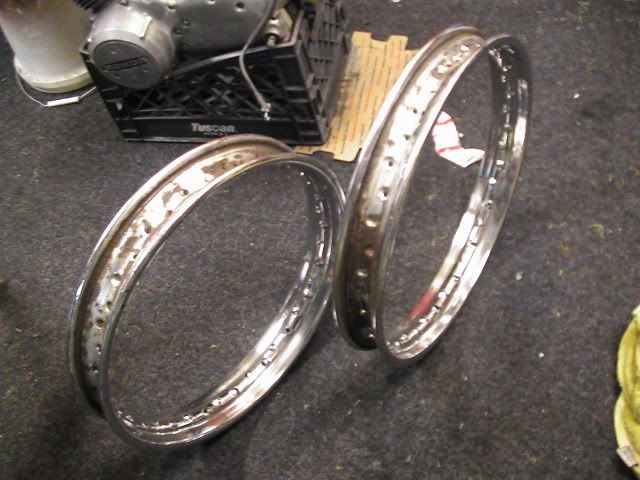
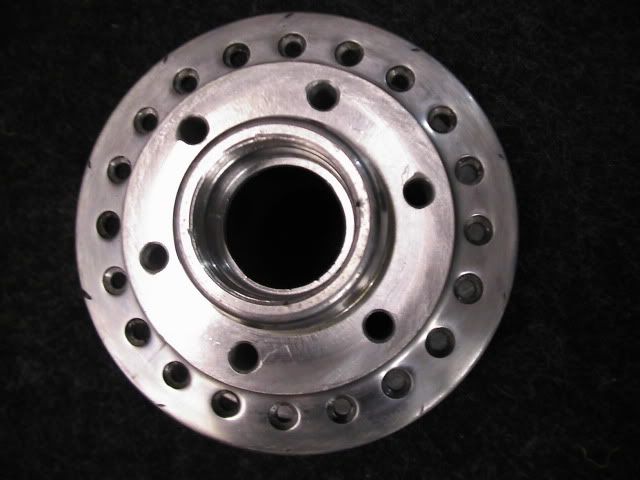

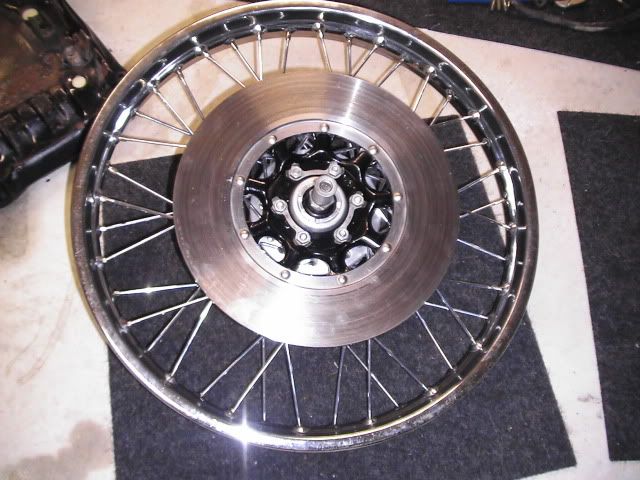
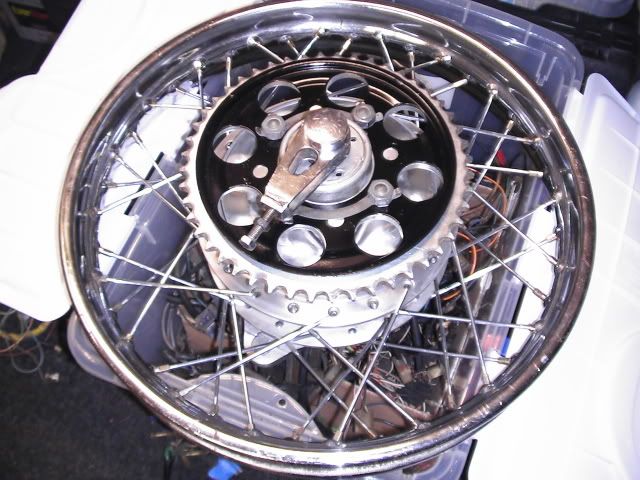
Once you gather the nerve to do it, once your done youll be like "wow that was easy" I took my CB750's rims and spokes apart, laced new spokes and took them to my buddy across town to true, since he had the tools. I made sure i did the inside spokes on each side first, then the outside spokes. Theres an in and out on each side of the hub. And there are 2 different types of spokes for each wheel. you'll have to check the fiche for your type of wheel, or like you said use your other rims as visual help.





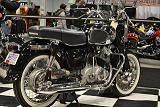
65 Sears Puch 250
69 Dream 305
74 Kawi H1
78 CB750 SS
-
e3steve
- h305 Moderator
- Posts: 2601
- Joined: Fri Oct 31, 2003 1:38 pm
- Location: Mallorca, Spain & Warsash, UK
I approached the task with a degree of trepidation but, having paid out for a truing stand from Tom Day at Apex (back in '08) -- which, along with his rear flipper, is probably the only part his suppliers haven't screwed up -- I found the whole operation was a piece o' piss. Certainly nothing to be afraid of.
I have to say that I read up an article in Classic Bike which was, fortunately, published at the right time for my task, and went in, head up and eyes open (as those of us afflicted by OCD tend to!). It was a doddle! Here's my take on the task in question.
The truing stand was a great confidence booster, and possibly just worth the $320, shipped to Spain, that it cost me. Especially as I'll now have another pair of wheels to build sometime in '11.
If you want me to scan & post the CB article, I'd be glad to. It suggests using a bare swingarm as part of a true stand, but you'd easily be able to setup the arse-end of your bike, with the fender removed, to do the job. And it covers the build-up of an asymmetric hub (a BSA Bantam) which, of course, demands two different spoke lengths. Our hubs are a walk-in-the-park, by comparison.
I have to say that I read up an article in Classic Bike which was, fortunately, published at the right time for my task, and went in, head up and eyes open (as those of us afflicted by OCD tend to!). It was a doddle! Here's my take on the task in question.
The truing stand was a great confidence booster, and possibly just worth the $320, shipped to Spain, that it cost me. Especially as I'll now have another pair of wheels to build sometime in '11.
If you want me to scan & post the CB article, I'd be glad to. It suggests using a bare swingarm as part of a true stand, but you'd easily be able to setup the arse-end of your bike, with the fender removed, to do the job. And it covers the build-up of an asymmetric hub (a BSA Bantam) which, of course, demands two different spoke lengths. Our hubs are a walk-in-the-park, by comparison.
that wasn't so hard.
Maybe the hard part will be truing up and tensioning them, but lacing them was no big deal. I was lucky to have another set of wheels to copy but i think it would be just as easy with some good pictures. Thanks for the responses to this e-mail they gave me the confidence to go for it.
Brian

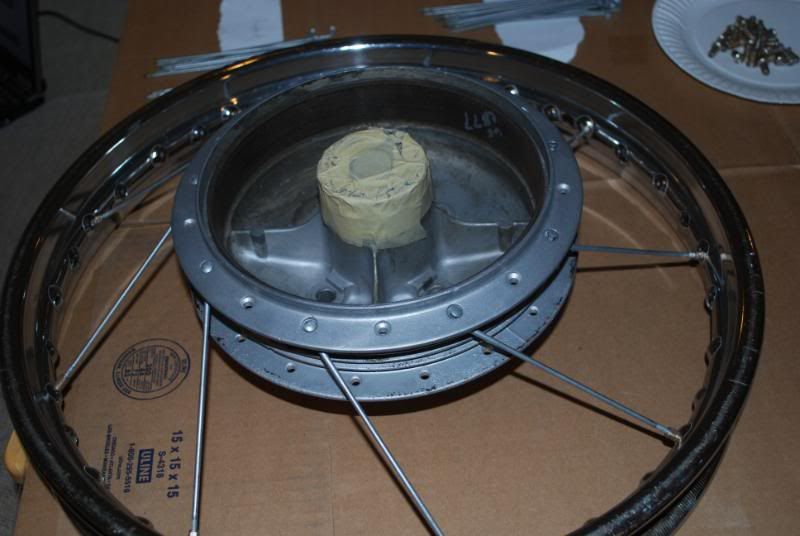
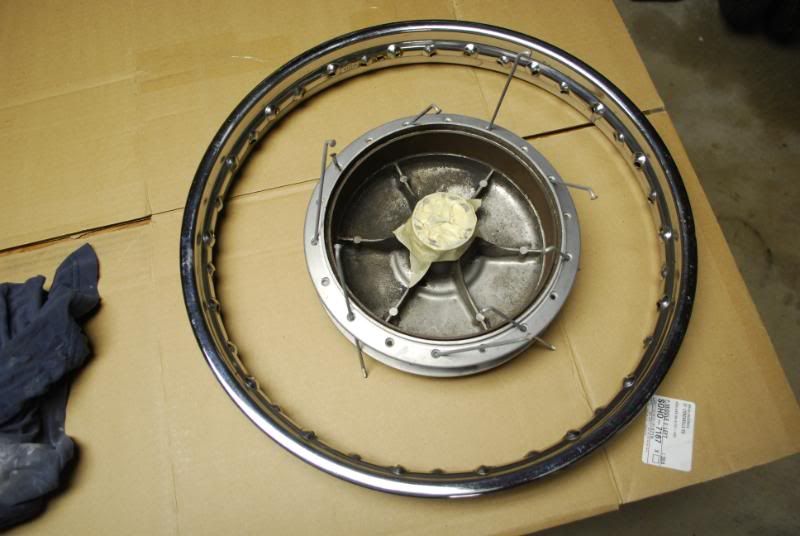

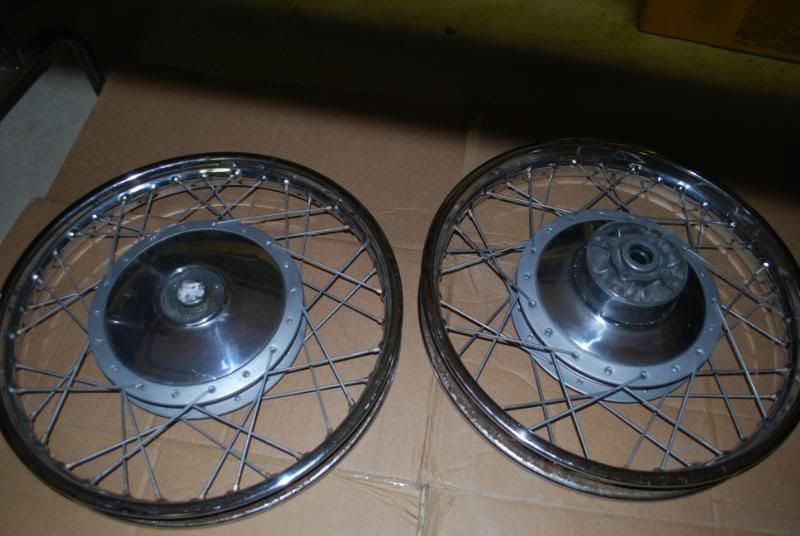
Brian







